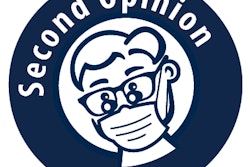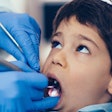
For the most part, electronic health records (EHRs) for dental and medical care remain completely separate in both private and public insurance programs, even when health insurers have assumed responsibility for dental benefits.
In addition, Medicaid programs, as well as their contractors, often carve out dental services to a third party benefit or claims manager. Even in integrated hospital systems and community health centers with both medical and dental services, integrated health records systems are rarely present.
 Colin Reusch, senior policy analyst, Children's Dental Health Project. Image courtesy of CDHP.
Colin Reusch, senior policy analyst, Children's Dental Health Project. Image courtesy of CDHP.In addition to separate entities often being responsible for medical and dental benefits, the goal of integrated health information technology (HIT) for medical and dental care is hindered by the lack of common coding systems, software, and interoperability. For example, the coding nomenclature used in dental records is almost exclusively for billing, whereas medical records use diagnostic codes.
It is, therefore, no small aim to have either a common EHR system for medical and dental providers or even interoperability of software across the two domains. While not wholly unattainable on the grand scale, it may be useful to consider a more incremental approach. State Medicaid programs, hospital systems, community health centers with both medical and dental services, and policymakers may be able to incorporate more simple electronic mechanisms to address the most pressing of concerns with regard to coordinated oral healthcare delivery.
Health information technology integration -- technical by definition -- requires a renewed focus on what is most important from a patient health perspective, rather than a program or provider perspective.
The following are two illustrations of the "So what?" of dental-medical HIT integration:
Complex medical conditions
Because oral health is an essential component of overall health, it is not surprising that oral health conditions, such as tooth decay, impact the delivery of care for some health conditions. For example, addressing oral infections is a primary concern for physicians of patients with heart conditions. In addition, certain heart conditions may complicate the treatment of severe tooth decay.
Colleagues in Washington, DC, shared with the Children's Dental Health Project (CDHP) an example of a child with a complex heart condition who was referred by a pediatric dentist to undergo treatment for cavities under general anesthesia. While the patient was placed on a waiting list for the operating room, there was no communication between dental providers and the patient's' cardiologist.
The patient's parent ultimately canceled the dental surgery, fearing that general anesthesia would adversely affect the patient as a result of the heart condition. As a result of delayed treatment, the patient's tooth decay progressed significantly. Lack of provider coordination further delayed the treatment, as the patient had not yet been cleared for dental surgery by the cardiologist.
A shared EHR would have made both medical and dental providers aware of conditions and pending treatments, and it could have facilitated the communication necessary to address the child's condition in a timely manner. However, even a bit of low-tech case management could have made a world of difference in coordinating care. An electronic marker for referral to dental treatment under general anesthesia could have triggered this.
Referral, care coordination, and common service delivery
The primary care setting is one of the largest missed opportunities for addressing oral health early in life. Data indicate that the vast majority (nearly 80%) of Medicaid-enrolled children ages 1 to 2 years are receiving routine medical screenings, such as well-child visits from primary care providers, such as pediatricians. However, only about 1 in 5 of those children receives any preventive services in the dental setting, suggesting that most are not seeing a dentist this early in life.
Unfortunately even fewer are receiving oral health services from their primary care providers. However, with increasing emphasis on early dental visits and the institutionalization of oral healthcare in the pediatric setting, the issue of care dental coordination is critical.
The electronic coordination of common services, such as oral health risk assessments and fluoride varnish by medical-dental providers, is essentially nonexistent in all but the most cohesive systems of care. For children deemed at moderate to high risk for cavities, both pediatric and dental offices should have access to information about diagnosis and treatment to provide appropriate and timely individualized care.
In addition, the referral of high-risk patients would be greatly facilitated by automated electronic communications between providers at the very least. Patients with complex medical issues may benefit from a team of providers keeping an eye on their health through a more collaborative approach.
Shared codes for common services and risk-level markers could be integrated into EHRs. Payors with shared responsibility for a patient's medical and dental care also may also be able to facilitate more robust electronic communication across providers when necessary.
Colin Reusch is a senior policy analyst at the Children's Dental Health Project in Washington, DC.
A version of this Second Opinion first ran on the Connecticut Health Foundation's website. DrBicuspid.com appreciates being able to bring this to our audience.
The comments and observations expressed herein do not necessarily reflect the opinions of DrBicuspid.com, nor should they be construed as an endorsement or admonishment of any particular idea, vendor, or organization.



















